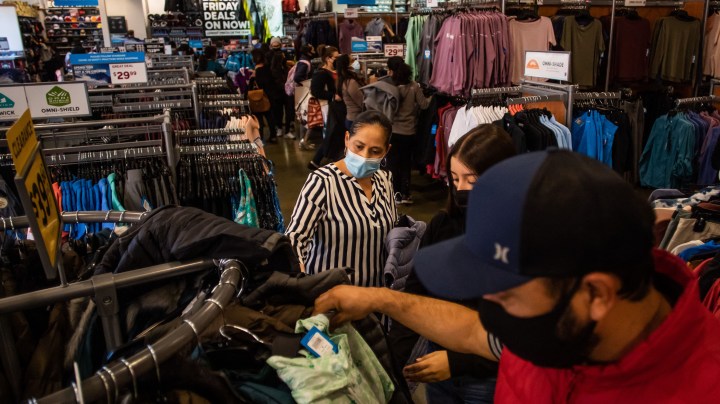
Where is consumer spending headed with omicron in the picture?
Where is consumer spending headed with omicron in the picture?

We got the latest consumer spending numbers from the Commerce Department this week. Spending rose 0.6% in November, which was a slower pace than spending rose in October.
That said, there are still some encouraging signs out that people are willing to spend — even with the arrival of omicron.
One likely reason that spending slowed down in November is that this year, people did more of their holiday shopping in October.
“Then when November came, a lot of that spending had already taken place, and so the numbers look a lot softer for November,” said George Pearkes, macro strategist at Bespoke Investment Group.
He said people were probably worried about the congested supply chain and wanted to get things early.
And overall, the big picture? “When you take the two months together, things look pretty normal, and, you know, healthy consumer spending growth,” Pearkes said.
There are other signs that consumer spending is still strong. The latest survey by the National Association of Manufacturers found that almost 90% of its members are feeling positive about the manufacturing outlook.
“And a lot of that really is the consumer continues to go out and spend, and that’s an encouraging sign for manufacturers,” said Chad Moutray, NAM’s chief economist.
It’s still too early to tell how consumers are reacting to the omicron variant, which the public learned about at the end of November.
And there’s still a lot of uncertainty as we move into the new year, Moutray said. “To the extent we have additional restrictions put in place or that the consumer starts to pull back a little bit, I think those are the real worry signs, I guess, as you move into the first quarter from omicron.”
If consumers do pull back, they’re likely to spend less on in-person services, according to Lynn Franco, senior director of economic indicators at the Conference Board.
“Restaurants, movie theaters, travel may well be impacted as we get into more of the surge that’s expected to take place over the coming weeks,” she said.
But Franco said people aren’t likely to pull back on buying goods.
This week, the Conference Board found that more people plan to buy cars, appliances and other big purchases over the next six months.
There’s a lot happening in the world. Through it all, Marketplace is here for you.
You rely on Marketplace to break down the world’s events and tell you how it affects you in a fact-based, approachable way. We rely on your financial support to keep making that possible.
Your donation today powers the independent journalism that you rely on. For just $5/month, you can help sustain Marketplace so we can keep reporting on the things that matter to you.

















